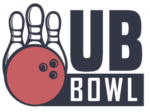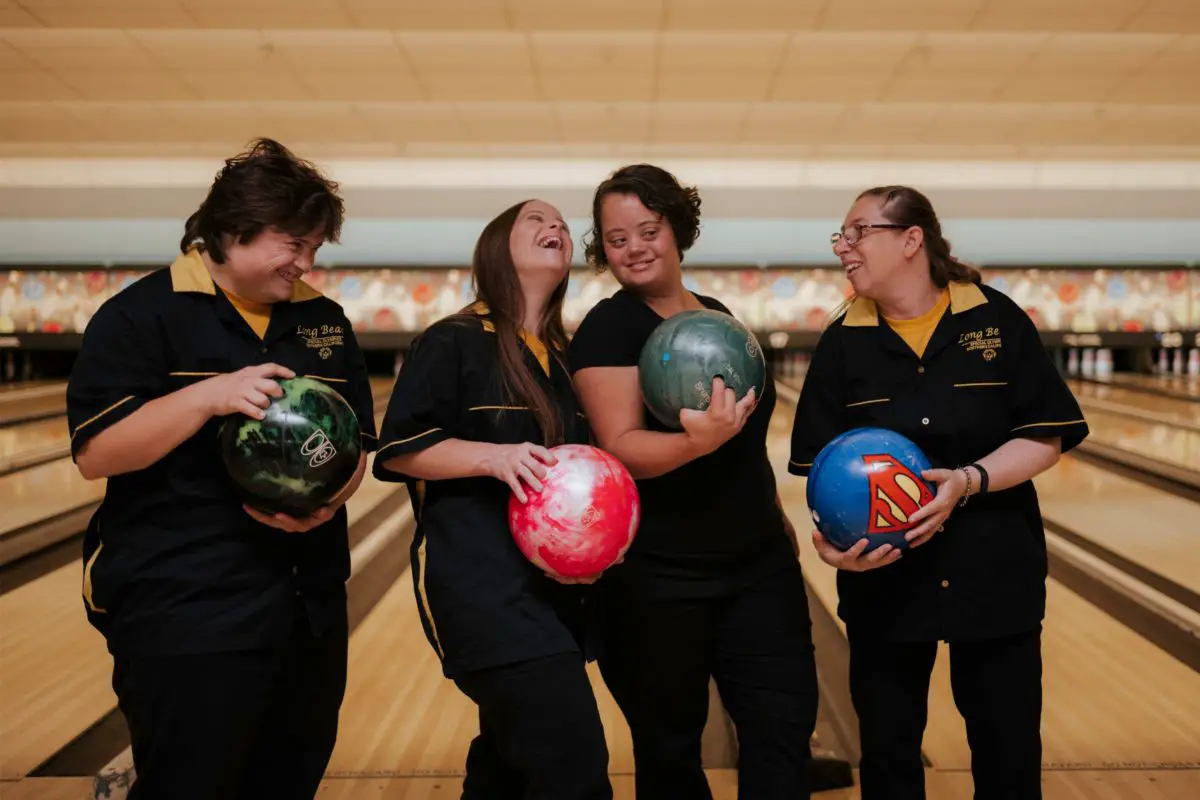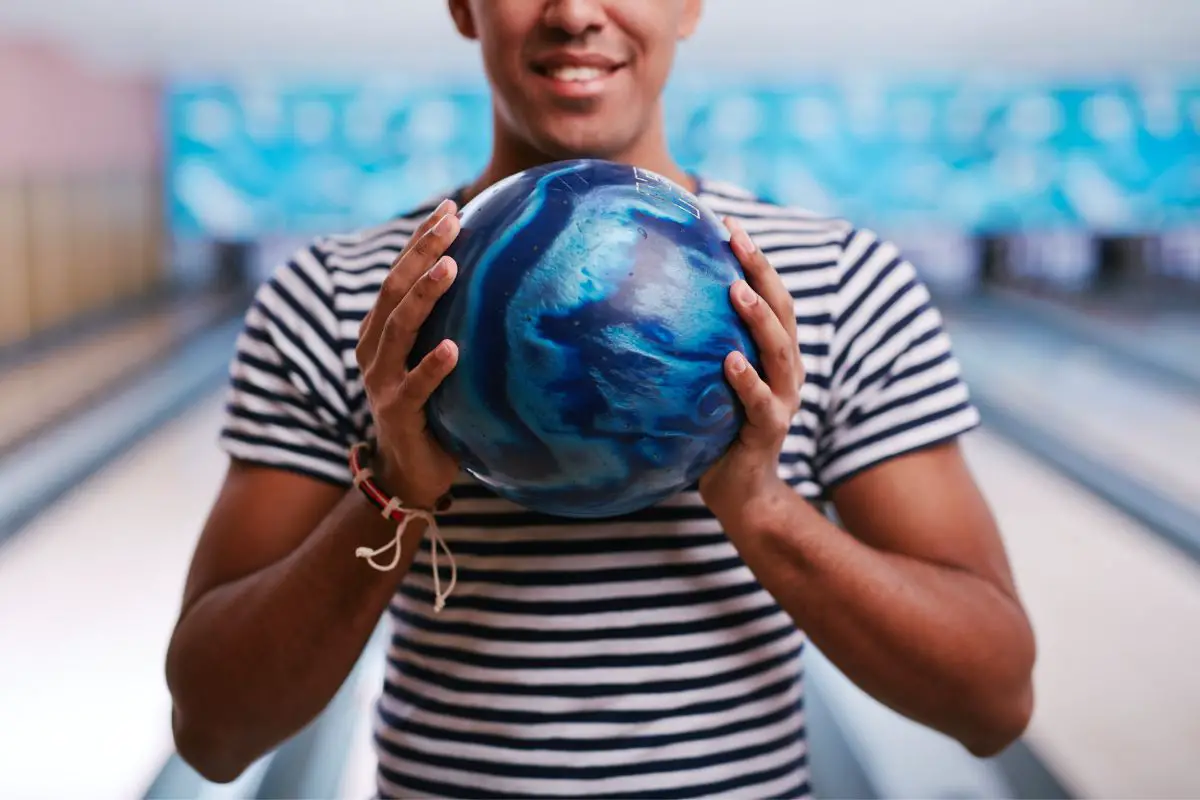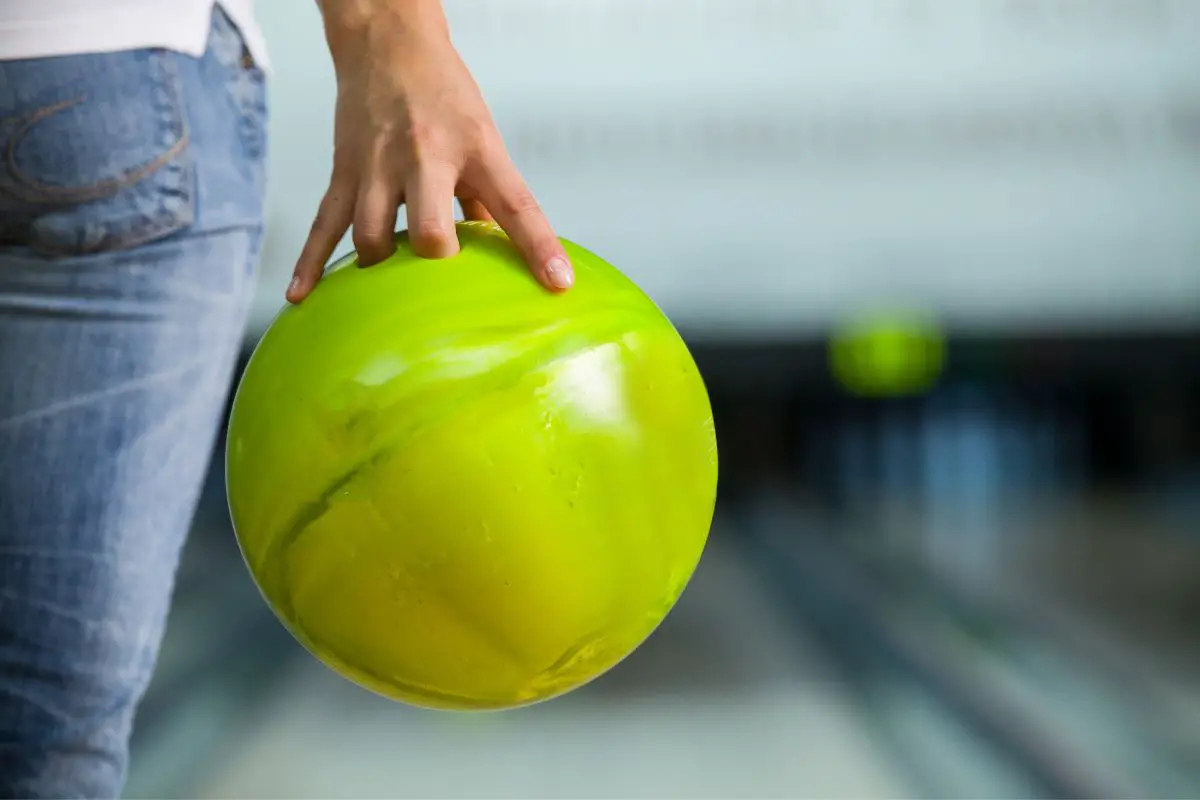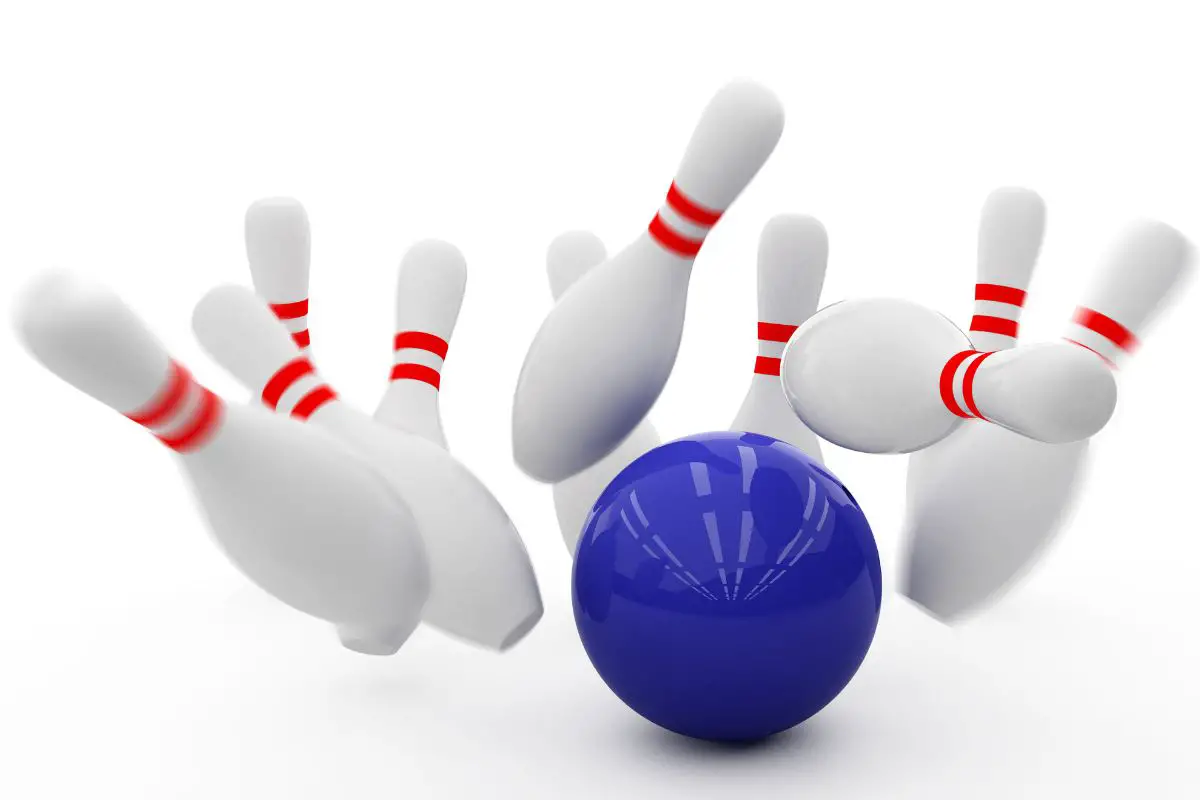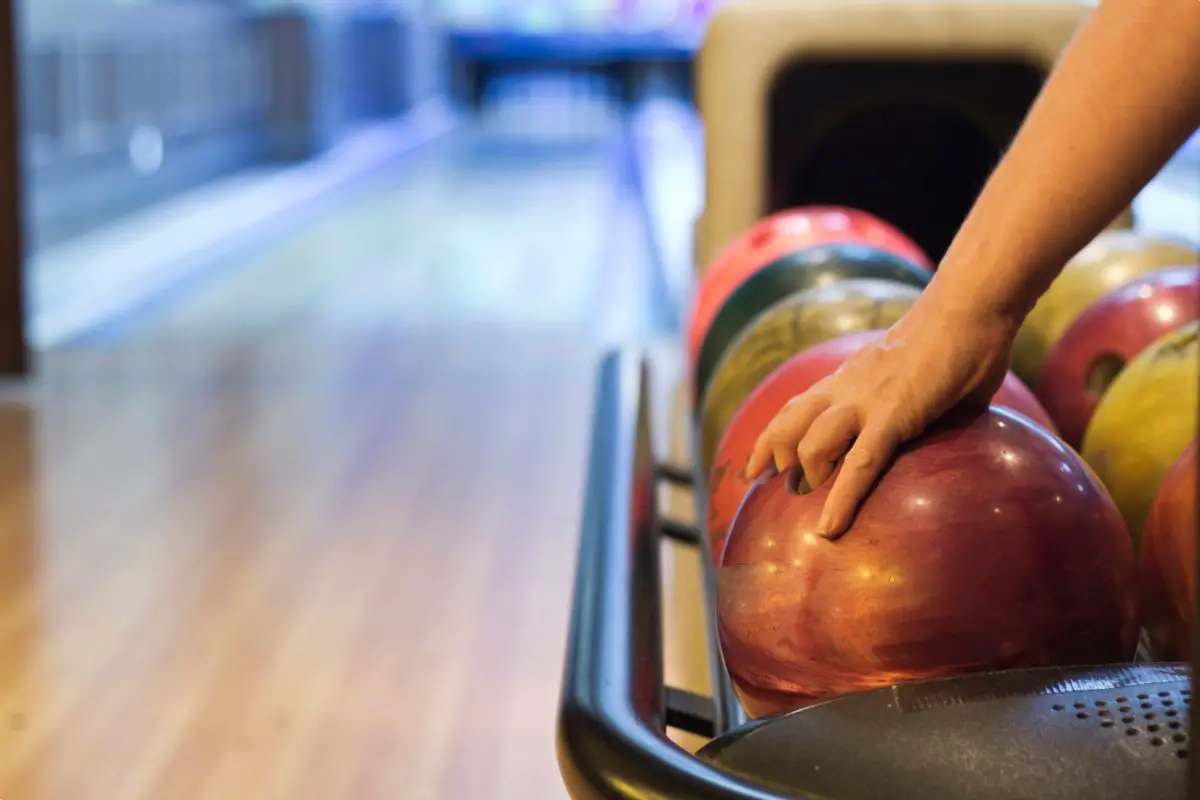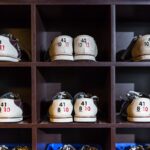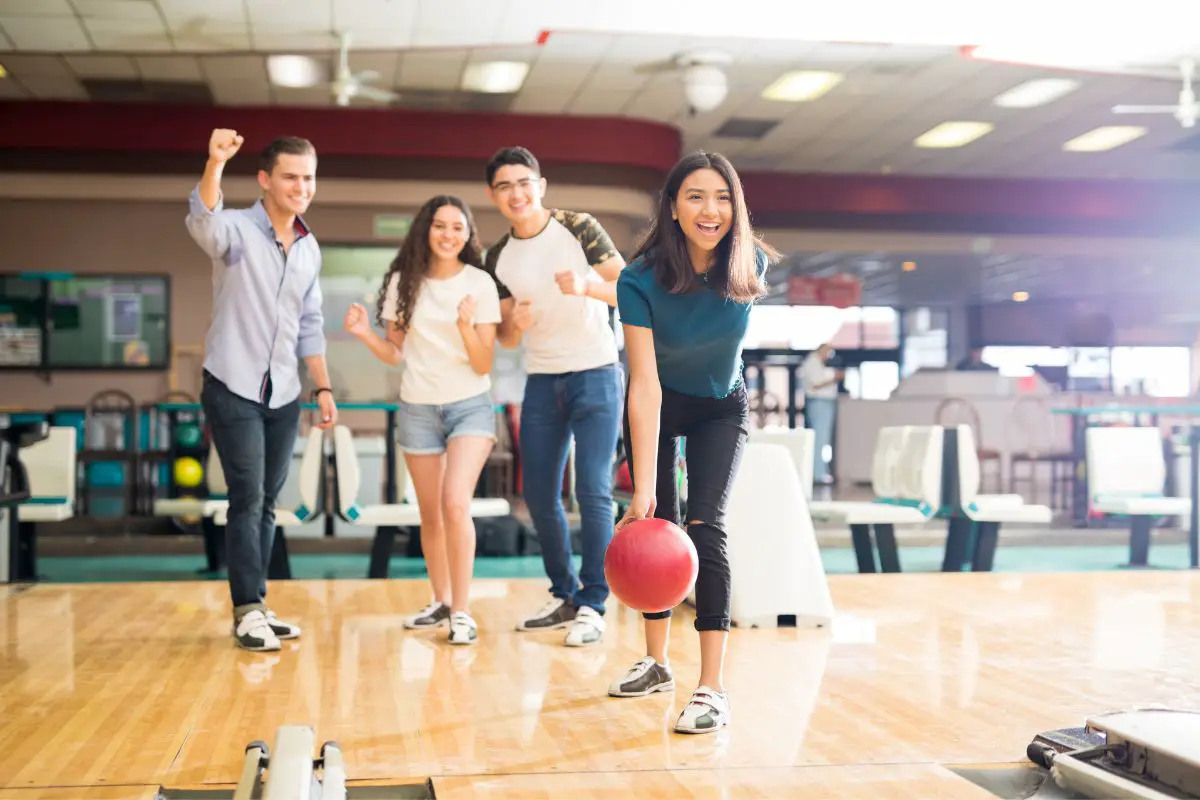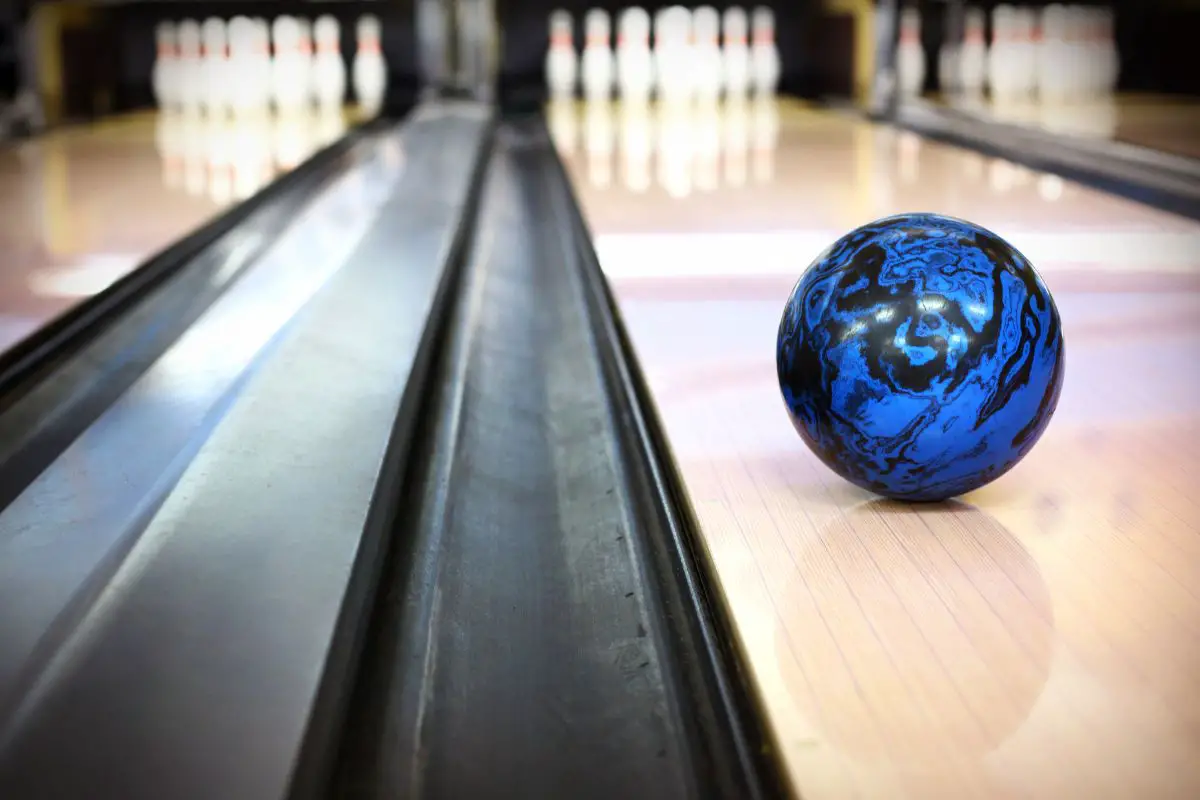Welcome to our guide on selecting the right bowling ball. Whether you’re a beginner or a seasoned pro, finding a bowling ball that suits your unique needs and preferences is essential.
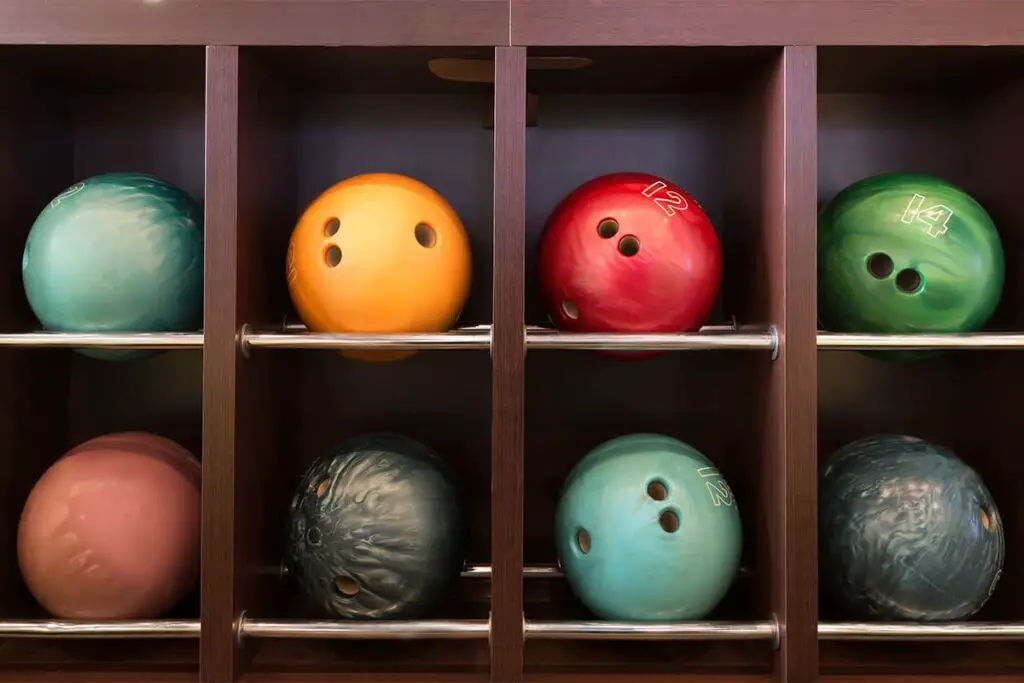
In this article, we’ll cover everything from choosing the weight to understanding different types of bowling balls, including their materials, cores, and even the impact of color.
After reading this guide, you’ll have all the necessary information to make decisions and enhance your bowling skills.
What Is A Good Bowling Ball Weight?
When it comes to choosing the weight for a bowling ball, there are several factors to consider, such as your physical strength, bowling style, and personal preference.
Generally, it’s recommended that the weight of the ball should be around 10% of your body weight up to 160 pounds.
Most adult bowlers select balls weighing between 12 and 16 pounds using the 10% rule as a starting point.
However, stronger individuals may opt for heavier balls to have control, while those with less strength might find lighter ones more comfortable.
The important thing is to prioritize comfort and control so that your swings and releases are smooth without straining your arm or shoulder.
It’s also worth considering experimenting with weights and seeking advice from a professional shop.
Additionally, having balls for different lane conditions can enhance your overall bowling experience.
Remember to adhere to the weight limits set by your specific bowling league or competition, which generally range from 10 to 16 pounds.
How Much Does A Bowling Ball Cost?
The price of a bowling ball can vary significantly depending on factors such as the brand, quality, customization options, and whether it is new or used.
For those new to bowling, entry-level plastic balls are usually the most budget-friendly option, typically ranging from $40 to $100.
If you want to enhance your game, urethane balls can be found for more than $150.
Intermediate and professional bowlers often prefer resin balls with excellent control and hook potential on oily lanes. These types of balls generally cost between $100 and $250.
Advanced bowlers may opt for particle bowling balls, ranging from $150 to $250 or even more.
If you want to add a touch, vanity bowling balls that allow customization with logos or designs are available at up to $150 or higher, including embossing costs.
Additionally, custom bowling balls that are specifically drilled to fit an individual’s hand may require an expense of around $50 to $75 on top of the ball’s price tag.
Depending on material and customization options, new bowling balls can generally be found at starting prices of around $40 for beginners, ranging from $100 to $250 for intermediate players, and exceeding $250 for advanced bowlers.
Alternatively, used bowling balls can also be purchased; some generic ones can start below $20, while decent used options typically cost around $40.
On average, the price range for a bowling ball falls between $90 and $140. However, the actual cost can differ significantly depending on factors like the type of coverstock and customization choices.
What Are The Different Bowling Ball Types?
There are several types of bowling balls, each made for specific purposes and tailored to fit various playing styles and skill levels.
Plastic bowling balls are a budget-friendly option commonly used by beginners due to their ability to roll straight with minimal curve potential.
Urethane bowling balls offer control and a slight curve, making them suitable for intermediate bowlers.
Advanced bowlers often prefer resin bowling balls, which provide a strong curve potential and perform well on different lane conditions.
Hybrid bowling balls combine elements of pearl coverstocks, offering versatility for various oil patterns.
Professional bowlers use particle bowling balls with textured coverstocks for curve potential but require advanced skills to handle them properly.
Vanity bowling balls are customized balls that allow for unique designs and personalization.
Choosing the type of ball depends on your skill level, playing style, and the specific lane conditions you encounter.
It’s important to have your ball drilled properly to fit your hand for performance, so consulting with an expert at a pro shop can help you make the right choice.
What Are Bowling Balls Usually Made Of?
Bowling balls typically consist of multiple layers made from different materials.
The core, which determines the ball’s weight and balance, is composed of substances like bismuth, rubber, or urethane.
On the other hand, the outer layer, the coverstock, plays a crucial role in surface texture and overall performance.
Different coverstock materials such as polyester, urethane, reactive resin, hybrid, and particle offer varying levels of friction and hook potential.
This makes them suitable for players of various skill levels and playing styles.
To achieve the desired amount of friction on the bowling lane, bowlers can customize the ball’s surface finish by either sanding or polishing it.
By combining these materials and making adjustments accordingly, a bowling ball can be tailored to meet a bowler’s requirements and adapt to different lane conditions they may encounter.
Quick Selection Guide:
| Coverstock | Description | Best For | Our Pick |
| Polyester | Provides a smooth, consistent roll with minimal hook potential. | Beginners, Straight Shooters | Columbia 300 White Dot Bowling Ball |
| Urethane | Offers better control and a moderate hook potential. | Intermediate, Advanced | Storm Pitch Black Bowling Ball |
| Reactive Resin | Generates significant friction on the lane for a strong hook potential. | Intermediate, Advanced | Hammer Black Widow 2.0 Bowling Ball |
| Hybrid Reactive | Combines features of solid and pearl coverstocks, balancing control and hook potential. | Intermediate, Advanced | Roto Grip MVP Attitude Bowling Ball |
| Solid Reactive | Offers a consistent and strong hook with a smooth roll. | Intermediate, Advanced | Brunswick Rhino Bowling Ball |
| Pearl Reactive | Provides a skid-flip reaction with a delayed hook. | Intermediate, Advanced | Storm Hy-Road Pearl |
| Particle | Features textured or particle-infused coverstock for exceptional hook potential. | Advanced, Professional | Motiv Jackal Legacy |
What Are The Different Bowling Ball Sizes?
Bowling balls come in various sizes and weights to suit players and preferences.
In bowling leagues and competitions, the maximum weight allowed for adult bowling balls is typically 16 pounds.
This weight category offers pin-carrying power and stability, which appeals to many adult bowlers.
Additionally, adult-sized bowling balls usually have a diameter ranging from 8.5 to 8.6 inches, ensuring compatibility with standard bowling lanes and equipment.
For those who prefer lighter options, 15-pound bowling balls are also quite popular among adult bowlers.
Furthermore, some individuals with less physical strength choose 14-pound bowling balls as they offer better control and reduce fatigue during extended play.
Bowling balls weighing 13 pounds or less are primarily designed for bowlers in youth and junior leagues. These lighter options provide a weight that facilitates skill development without causing undue strain.
On the other hand, very lightweight bowling balls weighing between 6 to 12 pounds cater specifically to young children and beginners by providing easy handling and control.
Choosing the size of a bowling ball, along with its weight and diameter, is crucial for comfortable play, precise control, and consistent performance.
Furthermore, it is essential to make sure that the chosen weight and diameter comply with the guidelines and regulations of your particular bowling league or competition.
These guidelines usually set weight limits for adults between 10 to 16 pounds.
Seeking advice from an expert at a pro shop can help you determine the perfect size, weight, and diameter that aligns with your personal preferences and requirements.
Quick Selection Guide:
| Weight (lbs) | Description | Best For | Recommendation(s) |
| 16 lbs. | Maximum regulation adult weight, offers stability and power | Most adult bowlers | High-performance balls, e.g., Storm Hy-Road, Hammer Black Widow |
| 15 lbs. | Slightly lighter than 16 pounds, common among adult bowlers | Adult bowlers | Versatile options like Brunswick Rhino, Roto Grip Hustle |
| 14 lbs. | Opted for by adults for easier control and reduced fatigue | Adult bowlers, less strength | Entry-level balls such as Ebonite Maxim, DV8 Alley Cat |
| 13 lbs. and Below | Designed for youth and junior bowlers, ideal for skill development | Youth and junior bowlers | Youth-specific bowling balls like Brunswick T-Zone, Ebonite Maxim JR |
| 6-12 lbs. | Very lightweight for young children and beginners, easy to handle | Young children, beginners | Lightweight balls designed for kids, e.g., Brunswick Lizard Eye, Ebonite Maxim JR |
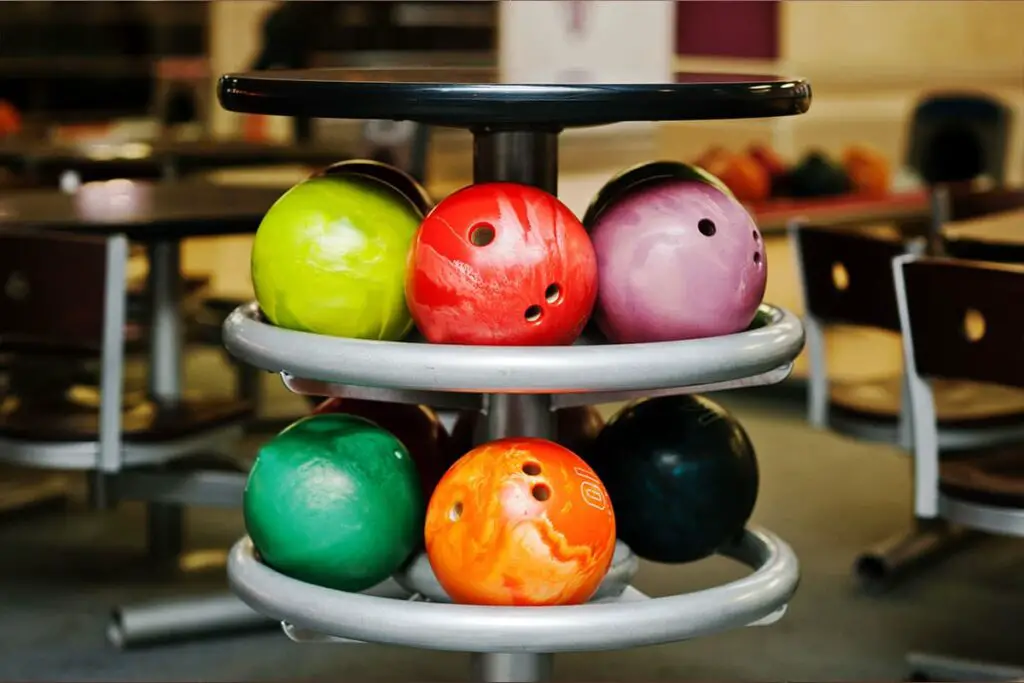
What Are The Different Cores In Bowling Balls?
Different core designs in bowling balls impact how they behave on the lane. These designs can be categorized into three types: symmetric cores, asymmetric cores, and pancake cores.
Symmetric cores have an even shape, resulting in a predictable ball motion. Pancake cores are symmetric, providing a smooth and manageable ball reaction.
On the other hand, round symmetric cores are slightly more rounded and offer a controlled hooking motion typically found in entry-level and benchmark balls.
Centripetal cores feature circles and provide a smoother and continuous hook, commonly found in mid-range to high-performance balls.
Asymmetric cores have shapes with varying mass distribution within the core. This asymmetry creates an angular ball reaction that advanced bowlers favor.
Radial cores promote a backend hook, while differential cores offer a pronounced hooking motion often seen in high-performance balls.
Pancake cores are known for their simplicity and flatness, delivering a smooth and controlled ball motion usually found in beginner-level balls.
The choice of core significantly affects how bowlers experience the ball’s reaction.
Advanced bowlers prefer asymmetric cores for their angular hooking abilities, while less experienced or recreational bowlers find symmetric cores appealing due to their predictability and ease of control.
The type of core, coverstock, and drilling pattern play a role in tailoring a bowling ball to suit a bowler’s individual style and the conditions on the lane.
What Are the Best Bowling Ball Brands?
Some well-known bowling ball brands have gained popularity due to their quality and the wide range of options they offer for bowlers of different skill levels and preferences.
These brands include:
- Storm, which is recognized for its designs.
- Brunswick a well-established brand known for its durability and reliability.
- Ebonite is famous for its classic and dependable designs.
- Hammer is acknowledged for its strong hook potential.
- Columbia 300, which offers a variety of ball options.
- DV8 is known for its edgy and unconventional designs.
- Motiv is celebrated for its innovation and unique cores.
- Track is renowned for precision-engineered balls.
- Roto Grip offers versatility to accommodate various conditions and styles.
- Radical specializes in competitive play with unique ball reactions.
It’s important to note that the popularity of bowling ball brands may change over time.
Therefore, it is advisable to consult pro shops and engage with the bowling community to stay up-to-date with the latest trends and recommendations.
Does Bowling Ball Color Matter?
The color of a bowling ball doesn’t impact its performance or how it interacts with the lane. It’s mostly a matter of preference and aesthetics.
The color choice won’t affect factors like weight, core design, coverstock material, or hook potential.
However, some bowlers believe that the color of their bowling ball may influence how they perceive its movement on the lane. For instance, a colored ball might be easier to track as it rolls down.
This preference could be more about psychological comfort, as certain colors make bowlers feel more confident and at ease.
While there may be some psychological or aesthetic influence from the color of a bowling ball for individual bowlers, it doesn’t significantly impact its actual performance or interaction with the lane.
Factors such as core design, coverstock material drilling layout, and lane conditions play larger roles in determining a bowling ball’s overall performance.
What Is The Best Way To Throw A Bowling Ball?
To effectively and consistently throw a bowling ball, it’s important to combine technique, body mechanics, and practice. Here are some key steps and tips for a bowling throw:
- Stance and Grip: Start by standing with your feet shoulder-width facing the pins. Hold the ball securely with a grip, ensuring your fingers and thumb fit into the holes properly.
- Approach: Take a controlled approach using four or five steps. Begin with your foot (right foot for right-handed bowlers, left foot for left-handed bowlers) while maintaining a steady pace throughout.
- Swing: As you move forward, gently swing the ball backward while keeping your elbow close to your body and your wrist firm. Allow the natural weight of the ball to guide your swing.
- Release: When your sliding foot reaches the line, smoothly release the ball, aiming for the same spot in your approach each time.
- Follow Through: After releasing the ball, continue the motion of your arm towards your target with your fingers pointing at the pins and finish near your shoulder.
These simplified steps provide a foundation for achieving a successful bowling throw. However, remember that consistent practice and refining of technique are crucial for improvement.
What Type Of Friction Does A Bowling Ball Have?
When a bowling ball moves on the lane surface, it encounters two types of friction.
The first is rolling friction, which helps the ball maintain its momentum and prevent sliding as it rolls forward.
Rolling friction depends on factors like the texture of the lane’s oil pattern and the ball’s coverstock.
The second type is hook friction, which causes the ball to curve or hook as it travels down the lane.
This friction is important for bowlers who want to change the ball’s direction and achieve an angle when hitting the pins.
The material used for the coverstock plays a role in determining hook potential friction. For example, reactive resin coverstocks provide friction coefficients and more hook potential.
Bowlers adapt their techniques and equipment choices, including selecting coverstocks with various surface textures to effectively manage and use these types of friction based on lane conditions and their own bowling styles.
In Summary
Finding the right bowling ball is a crucial part of the game, considering factors such as weight, type, coverstock, and core design.
The first step is to choose a weight that suits your strength and playing style. It’s important to feel comfortable and in control during your game.
Bowling balls come in types ranging from plastic to reactive resin, and there are even options for customization if you want something unique. Understanding these types and their suitability for skill levels is essential when making a smart decision.
Additionally, exploring the core designs of bowling balls (whether they are symmetric or asymmetric) can affect how the ball moves in the lane. We’ve also examined how color (or lack thereof) plays a role in perception.
Lastly, mastering the technique for throwing a bowling ball ensures that your chosen ball performs at its best. With this knowledge, you can confidently embark on your bowling journey with precision and skill.
- A Comprehensive Guide to the Top Bowling Movies of All Time - December 23, 2023
- Bowling Shoes Selection Guide: How to Choose the Right Fit - September 27, 2023
- Bowling Ball Buying Guide: How to Choose the Right Ball for You - September 23, 2023
